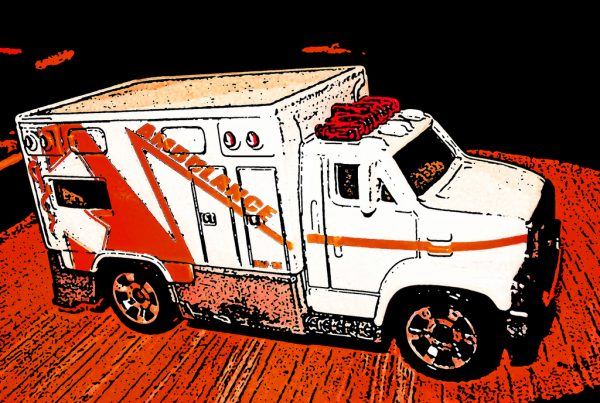Into the foreseeable future people will need transportation for medical reasons; but they may not be coming to you.
Why? The industry is “Uberizing.” New transportation technology and business models are providing services that are cheaper than yours. If you do not believe that your industry can be disrupted, just think of what Uber is doing to taxi companies. And now Uber is coming for paratransit and medical transportation. Since the beginning of 2016 the number of states doing business with new companies like Uber and Lyft has increase significantly, they include Michigan, Maryland, and New York.
In non-emergency medical transportation (NEMT), trips are usually billed to Medicaid or insurers, so trip prices are usually higher than an Uber or a taxi. But how long will that last? In a recent article about Uber’s foray into paratransit and NEMT in Oregon, they found that the only thing holding back Uber was the lack of an appropriate vehicle supply. NEMT operators also must contend with municipal and state governments who are trying to cut costs by finding alternatives for people transportation.
 And here is the rub, the technology that is driving down trip prices is not just being adopted by newcomers like Uber or looked at by slow moving governments; it is being rapidly adopted by your competitors (we know because we sold it to them). What exactly is this “Uberization?” It is just a collection of recently developed technology; which allows: on-demand transportation, same day booking (or even same hour booking) and constant adjustments to routes and schedules, and it does these things for incredibly cheap. This is something NEMT companies struggle with providing. It is a difficult problem: you have limited numbers of vehicles and customers who desire narrow appointment windows. To be blunt, you are in an evolving marketplace, a competitive arms race with hundreds of businesses just like yours and they are altering how things work, what are you going to do about it?
And here is the rub, the technology that is driving down trip prices is not just being adopted by newcomers like Uber or looked at by slow moving governments; it is being rapidly adopted by your competitors (we know because we sold it to them). What exactly is this “Uberization?” It is just a collection of recently developed technology; which allows: on-demand transportation, same day booking (or even same hour booking) and constant adjustments to routes and schedules, and it does these things for incredibly cheap. This is something NEMT companies struggle with providing. It is a difficult problem: you have limited numbers of vehicles and customers who desire narrow appointment windows. To be blunt, you are in an evolving marketplace, a competitive arms race with hundreds of businesses just like yours and they are altering how things work, what are you going to do about it?
Let’s break down the solution; you need a suite of technologies that will keep your company competitive. What are some of them? Research indicates that nearly 86 percent of firms with vehicle fleets have adopted GPS equipment; and that research is four years old now. GPS alone is not very helpful. But if the data from GPS is used to automatically adjust routes and schedules, then the efficiency starts to roll in. This is route optimization: using algorithms to solve complex problems in seconds. As the price point for trips in the industry continues to fall and as demand for faster, adaptive service rises, real-time routing becomes a necessity. But the power of optimization software must be properly applied to your business. Which is where the “hardware” comes in.
Why is Uber actually able to spread so fast? Because it is using smartphones and cloud computing. They are easy to pick up yet have powerful effects. As an article by Logistics Management explains: “because they don’t require hard wiring or elaborate IT infrastructures, today’s wireless, cloud based technologies are helping companies of all sizes make the jump from manual to highly automated solutions literally overnight.” By using this technology it gives you the ability to spread and scale. And the benefits do not end there. A 2013 MIT survey on the impacts of digital technology found “that improving customer relationships was the area where companies were having the most success with digital technology.” When your drivers have a smartphone, keeping them constantly connected, and your dispatch technology is constantly monitoring every conceivable variable, then your service becomes reliable and repeatable. People with important appointments appreciate that reliability.
All t hese points are why, in the same MIT survey, that garnered responses from 1,559 executives and managers from a wide range of industries, it was found that for 78% of respondents, adopting new technology will become critical to their organizations. A further 63% of respondents said the pace of technology change in their organization is too slow. Slowness is deadly in a marketplace as crowded and dynamic as people transport, but it is difficult to know when to “pull the trigger.” MIT researcher Andrew McAfee sums up his advice to companies avoiding technology adoption: “I get the impression sometimes that a lot of the management teams at companies say, ‘would you please stop the technology innovation?’ They think they’ve done it all. But the reality is, we’re only at the very, very beginning of this next generation of computing. I don’t care what industry you’re talking about.” NEMT operators who have large fleets, or ambitions of large fleets, know that they need the latest technology in order to unlock the full potential of the huge investment they made. It is only a question of when, not if.
hese points are why, in the same MIT survey, that garnered responses from 1,559 executives and managers from a wide range of industries, it was found that for 78% of respondents, adopting new technology will become critical to their organizations. A further 63% of respondents said the pace of technology change in their organization is too slow. Slowness is deadly in a marketplace as crowded and dynamic as people transport, but it is difficult to know when to “pull the trigger.” MIT researcher Andrew McAfee sums up his advice to companies avoiding technology adoption: “I get the impression sometimes that a lot of the management teams at companies say, ‘would you please stop the technology innovation?’ They think they’ve done it all. But the reality is, we’re only at the very, very beginning of this next generation of computing. I don’t care what industry you’re talking about.” NEMT operators who have large fleets, or ambitions of large fleets, know that they need the latest technology in order to unlock the full potential of the huge investment they made. It is only a question of when, not if.
Everyone doing people transportation needs the latest tools to keep up with the price points and efficiency of competitors. Like it or not, change is coming to the transportation industry and ignoring it is a sure way to atrophy your business. Technology might be a challenge, but it has become easier than ever to deploy and quickly pays for itself. Learn more about what we can do for your business at our website and if you have any questions leave them in the comments below.




